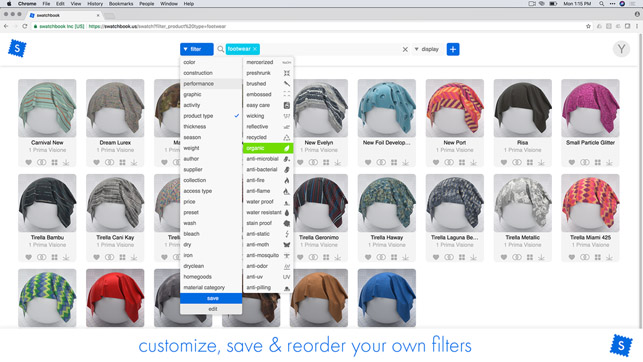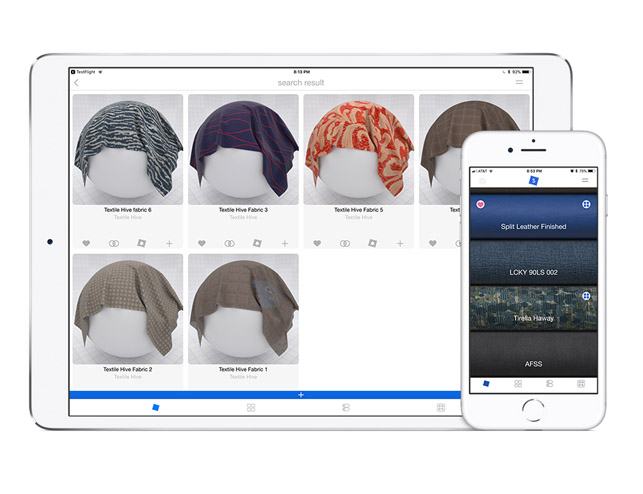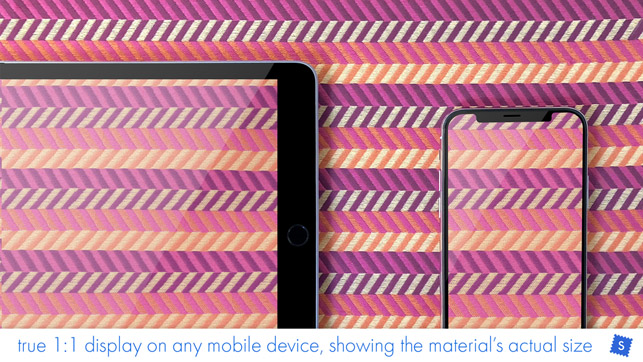swatchbook promises to bring some order to the chaos of the Colour, Materials and Finish profession with some hooks into data collection as well as to visualisation and rendering tools, Al Dean takes a look
While there are a wide range of tools to conceptualise, visualise and simulate the form of products in development, there’s a critical part of the workflow that’s often ignored. That is the specialism of Colour, Materials and Finish (CMF), which is often fundamental to the success of many different classes of products.

swatchbook uses the cloud to huge benefit, allowing an organisation to share its materials information easily and pervasively
While the term CMF might be most prevalent in the seemingly opposing worlds of automotive design and Retail, Footwear and Apparel (RFA), there are elements of it in almost every product development project.
Design is as much about how a product’s colour, tactile feel and visual aesthetics work in terms of CMF as it is about shape.
Yet, when you look at the workflows, data capture and collaboration processes that centre on the CMF industry, there’s not a great deal out there. At one end of the spectrum, there’s RFA focussed PLM solutions (such as PTC’s FlexPLM) and at the other, there’s Photoshop, Illustrator, Word and Powerpoint, which is used to collect swatch information, supplier details and tech packs for distribution to suppliers.
Surely, in this cloud-connected world, there’s something more efficient that allows those with the specialism in the subject to capture that data and share it in a meaningful manner with others in the process? If your CMF team or consultant shares with you a set of materials for a future product, wouldn’t it be useful to be able to order swatches direct from the supplier? If your team decides on a set of materials for your next generation product, wouldn’t it be useful to have those materials available for use in your visualisation system?
This is where swatchbook, founded a couple of years ago by former luminaries from both Foundry and Keyshot, is looking to make an impact. The idea is to use the knowledge of this workflow and combine it with some smart thinking to make the whole process work together more efficiently.

The interface adapts across your devices and allows you to choose the presentation mode most suitable to your need
Enter swatchbook
swatchbook is a cloud service. Once you’ve signed up and logged in, you’re presented with a pretty sparse interface. You’ll see a grid of existing materials in the system and a search bar at the top.
It’s organised in a couple of ways so let’s start with the basics — the swatch.
Each individual material is stored as a swatch. This can contain a varying degree of information — from the basics in text form such as name, supplier and price, through all manner of metadata you might want to add (from patents that relate to it or its use, lifecycle information, compliance info and much more). You can, of course, add in scans of samples, supplier information and tags. There are also workflows relating to the use of QR codes for ensuring that your physical swatch library syncs up with your digital resource.
Colour information is also key as the system includes tools to ‘find materials similar to’. At present, this uses RGB hex values though I’d love to see this expanded to include CMYK, Pantone, NCS and RAL values to make it more useful.
Alongside this pretty standard metadata, the links to visualisation and rendering tools also come into play here as it’s possible to load in not only photographs of your materials, but more accurate, scientifically led scans for colour mask, specular colour, roughness, normal, displacement and alpha.
This data is then processed and made available for reuse in rendering systems.
Alongside this, you can also store and distribute any presets that you have available for a growing list of systems including Keyshot, Modo, VRay, VRED, Octane, Substance (from Allegorythmic) as well as RFA specific applications such as Vstiticher and Clo.
The system also supports the loading of scan data from the likes of Vizoo and other material scanning services that’ll output an AxF format.
The idea here is that you’ll be able to populate your library with materials as you discover and specify them. Additionally, you’ll also be able to peruse materials from suppliers that have uploaded their materials to the public library that every user shares.

swatchbook allows you to view materials at the correct 1:1 scale, whatever your device
swatchbook – Collections
Now that we’ve got an understanding of how swatches are found and created, how do you manage that data in a meaningful manner? swatchbook uses the concept of Collections. These allow you to find and discover your materials and then collect them together in a project.
This makes the filtering and exploration nature of the system useful — as you collect together materials for a project you can instantly share them with others involved in the process. This is where swatchbook wins pretty big.
Many of the issues around this process arise from having a wide range of folks all of whom have an infl uence on those CMF factors. For example, the supply chain management focussed folks might want to lead with a price and sourcing view of the world, so they can dig into a text-heavy based representation of the data.
The fabrication planning department might prefer to look at the material swatches as a roll where each swatch is presented as a bolt of fabric (as shown in Figure 2). Whereas the visualisation team might prefer the default draped form as shown in Figure 1.
The swatchbook team have dedicated a lot of effort to this area in allowing folks to interact with this data in the manner they’re most comfortable with. Another factor to consider is the 1:1 scale the team has built into the product. Irrespective of what device you’re using, hitting the 1:1 button will pop the view of the material to the correct, real-world size — something that’s particularly difficult to visualise in any other way.

You can manage 3D visualisation materials, linked to physical materials
In conclusion
swatchbook might not be the sort of system that the majority of DEVELOP3D readers will be interested in, but the reality is that many of you are engaged in industries where this sort of struggle is real and one which might be made more efficient with judicious application of a well thought out service.
swatchbook, while initially focussing on CMF and RFA workflows, has huge potential elsewhere as more industries become focussed on improving the cohesiveness of their brands through the clever use of materials, colour and finish to differentiate themselves from their competition.
The same applies to the consumer electronics industry and the construction equipment market as it does to the automotive or sportswear world.
When you strip swatchbook back, it’s a materials lifecycle management system that, at present, focusses on the visual aspects along with the all important business end of supplier and supply chain management.
If I had two wishes for the system as it develops, the first would be that the team build in more tools for collecting data from the field (perhaps linking to colour scanning devices) or trends capture to store alongside the more specific materials information.
The second is that the remit be expanded to include more engineering materials and perhaps with a link up with more mechanical data surrounding materials. Imagine a single database where you can share materials information that anyone in your organisation can access. It contains a single source of truth, not just supplier and aesthetic data, and from which the mechanical engineering team can grab centralised materials data for structural analysis.
As things stand, swatchbook looks impressive. It’s impressive not only in the manner in which the team has managed to make a complex process effortless and build a cloud-based user experience that adapts to the needs of the user, but also in that it has managed to build in a set of tools that allows an organisation to centralise fundamental data that’s typically been stored in a very ad-hoc manner.
Yazan Malkosh, Founder and CEO of swatchbook, will be giving a talk entitled ‘The Future of Materials’ at DEVELOP3D LIVE on Wednesday 20 March at Warwick Arts Centre
| Product | swatchbook |
|---|---|
| Company name | swatchbook |
| Price | On request |






